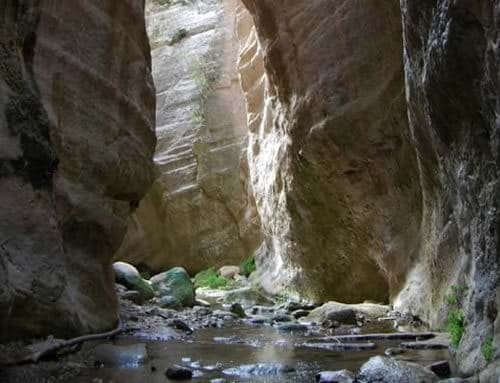The emergence of Cyprus as an island began millions of years ago, when the edge of the African Plate moved under the Eurasian Plate, exerting pressure that eventually raised oceanic crust and the upper mantle above the level of the sea. This kind of geological formation is called an ‘ophiolite’—in Greek ‘ophio’ means snake and ‘lite’ means stone—as the rocks in it have a serpentine texture and appearance. The Troodos Mountain Range in central Cyprus is one of the best-known and most-studied ophiolites in the world. Here scientists—and the casual observer—can see rock layering that is usually hidden beneath the sea. Examples of these rock features abound in the Akamas Peninsula National Park and its environs. For example, you can see pillow lava—submarine extrusions where seawater cooled and hardened lava in pillow-shaped patterns. Deposits of sedimentary rocks, lifted from the sea, have since been shaped into gorges by erosion. Along the shore, you can also view marine terraces—places where a coastline smoothed long ago by the sea’s waves has been lifted above the current coast. To see multiple rock specimens from the region, head to the Museum of Natural History of Pomos. Just a 30-minute drive northeast along the coast of Chrysochou Bay, the museum also includes fossils and a petrified pine cone that is one million years old. You’ll emerge with a newfound appreciation of the geological forces that have shaped the natural beauty of the island.
